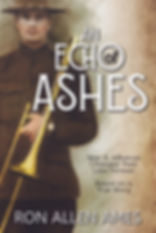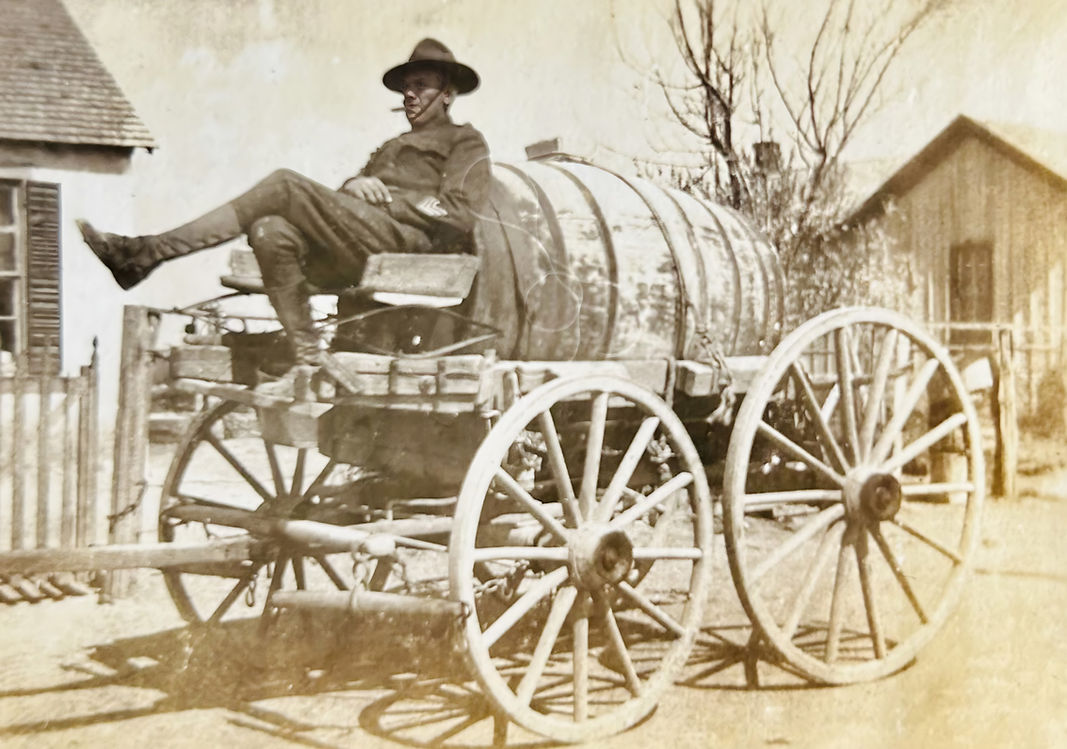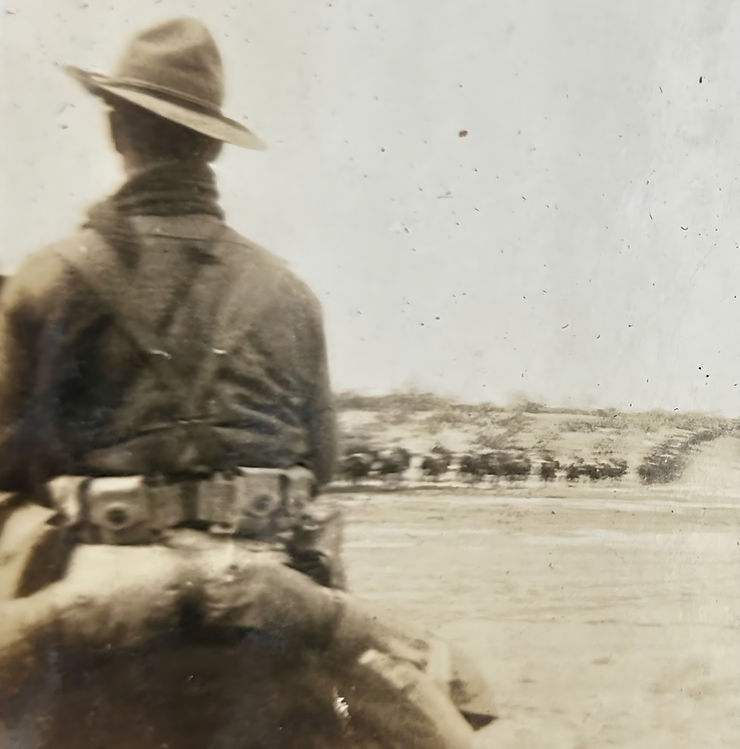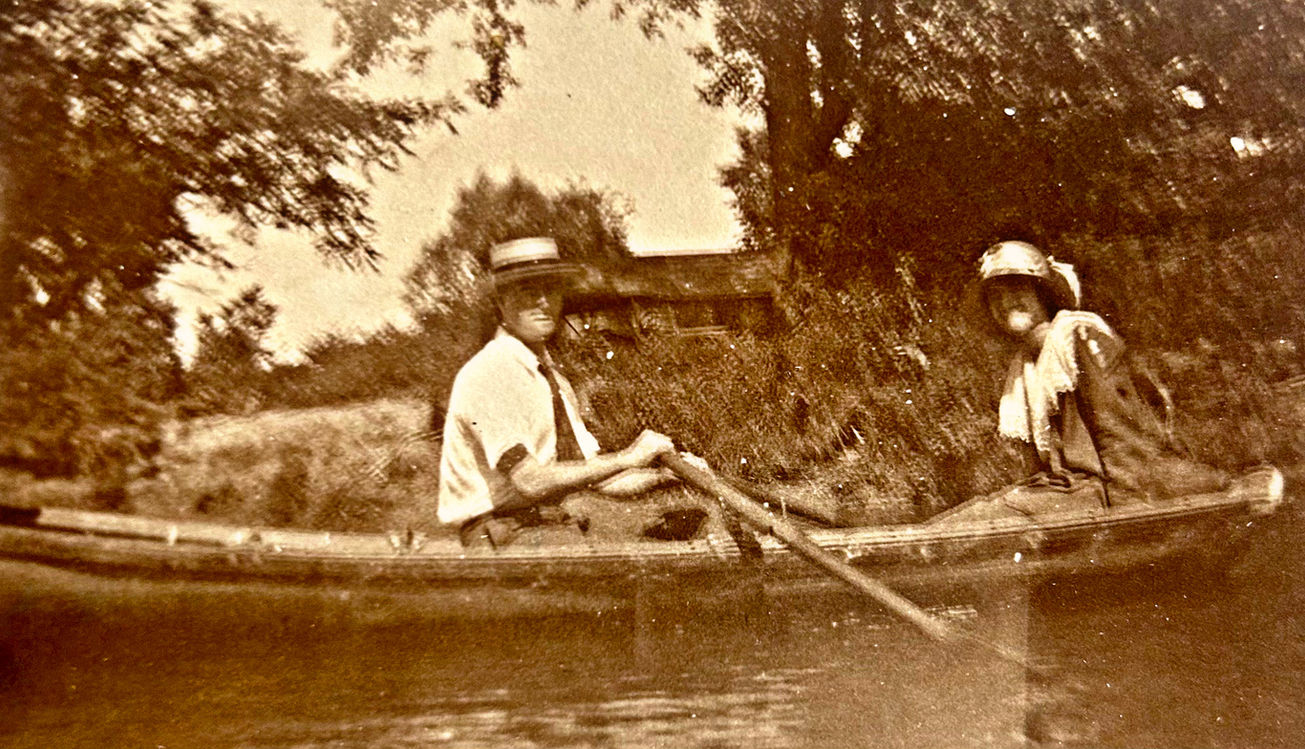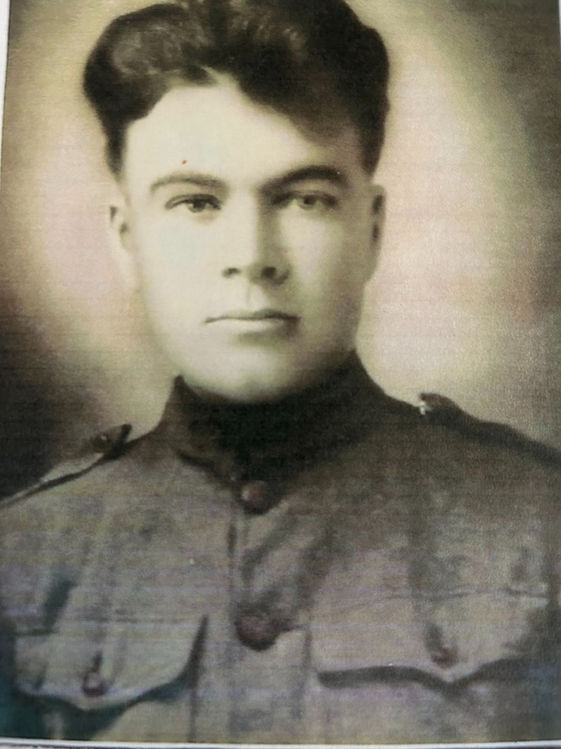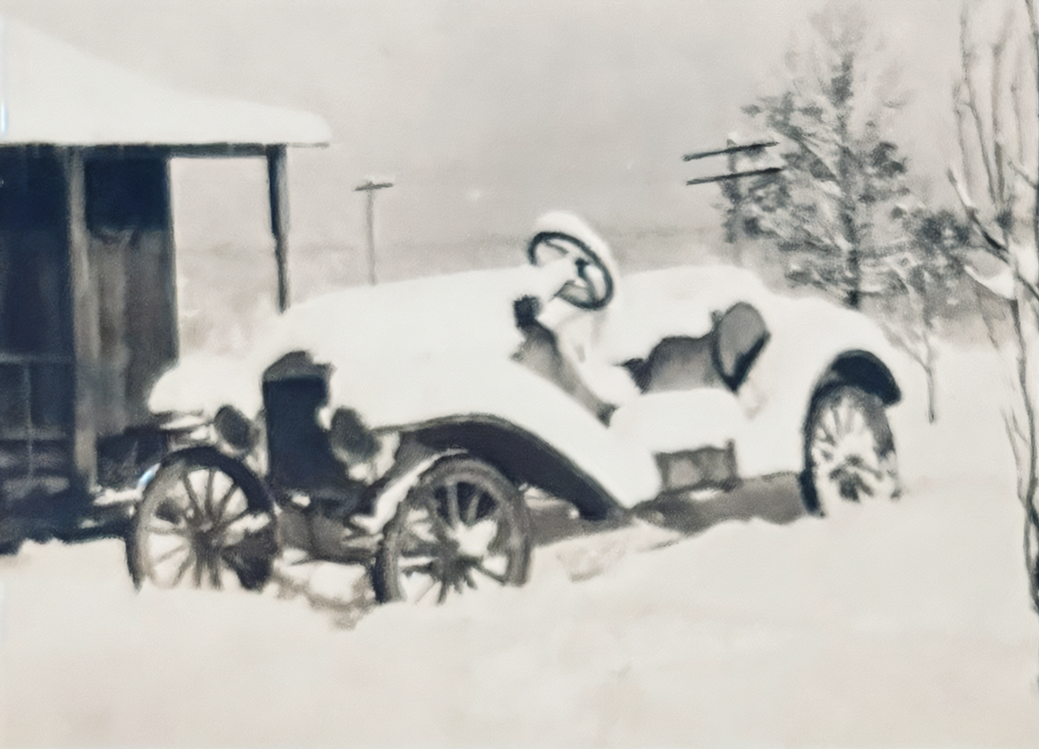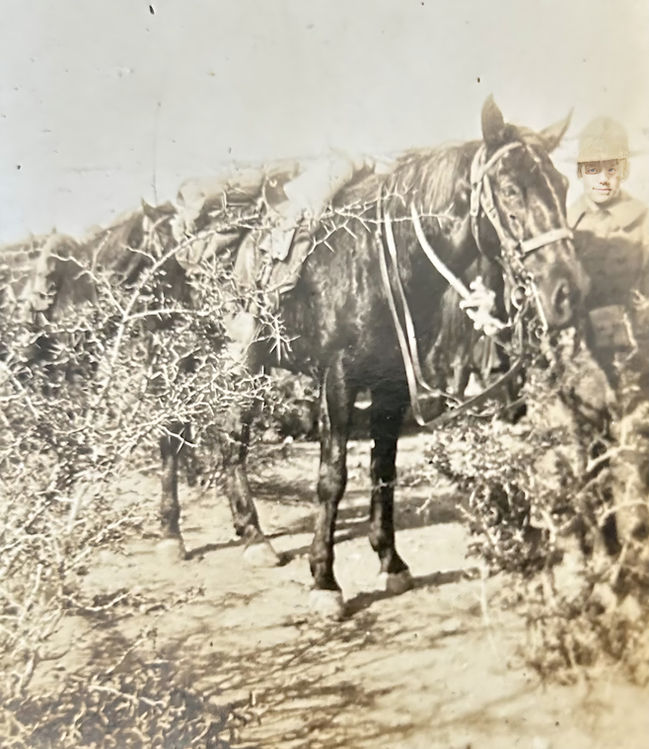Ron Allen Ames

Ron Allen Ames is a history enthusiast who attributes his 46 years of life experience as a hands-on business co-owner, for giving him insight into human nature, a benefit when portraying the lives of others. The information he received, dating 1914 to 1919 is what prompted Ames to bring this history to light in An Echo of Ashes. Ames lives with his wife Cathy in Pennsylvania. They have two grown sons.
"I don't see myself as the author of this book, but more of a conduit relaying the information given to me about the past. The family letters, postcards, journals, newspaper articles, and photographs found in a tattered old box contain a record of a somewhat forgotten time when a great war and a pandemic simultaneously struck the world. History records major events, statistics, details of destruction, and world changes, but it often overlooks the home front and the emotional impact of such a perilous time. An Echo of Ashes is just one of many stories from this era."
Books by Ron Allen Ames
METAL HORSES
Jason Ruder has heard rumors for years, today, he learns the truth about the car in the shed. The recluse owner he meets, tells a story that whisks Jason's mind back to the time of bell-bottoms, muscle cars, draft cards, and the music of the early 70s. (Click on image to learn more or buy)

Book Questions
What is your interpretation of the above epigram?
What is your favorite or most moving moment in the book?
How does Earl's interpretation of the meaning of the Chickadee's call in Chapter 5 relate to Lucile when she hears the Chickadee's call
in Chapter 28?
In chapter 17, what is Earl trying to say in his letter to Lucile when he writes, "This vision I hold has led me to the edge of a dream. If I step in . . . are you there?"
What is the deeper meaning of Albo's reckless ride on Dolly to the abandoned city of Pithole in chapter 25?
At the end of chapter 20, when Jack cries out in his mind for a stretcher-bearer, is he calling out for Percy or himself?
BACKGROUND INFORMATION ABOUT "AN ECHO OF ASHES"
Yellowed letters, frayed journals, and faded photographs kept in a tattered old box—whispers of a time long past, a story once lost, now found. An Echo of Ashes is based on actual events that unfold during the years 1914 to 1919.
The story begins on a winter's day, in the backcountry oil fields of Northwestern Pennsylvania. The haunting sounds of a turn-of-the-century operating oil lease echo through the hills. This semblance of normalcy is shattered when a great explosion interrupts an essential hunt for food. The blast serves as a harbinger of the dramatic upheaval to come.
Amidst this background, the chapters capture moments of humor and hope, woven through the daily challenges faced by an early 1900s family of seven. A fragile romance between Lucile and Earl begins to blossom just before two cataclysms happen simultaneously: the ongoing devastation of World War I, and now the relentless scourge of the Spanish Influenza.
This convergence of war and influenza leads loved ones down unexpected paths, marking one of the darkest times in American history.

Courtship and marriage were immensely affected by the swiftly changing events. The closure of social venues such as churches, schools, movie theaters, and other gathering places was meant to curb the spread of the disease but also created a form of social isolation. An Echo of Ashes follows the information it was derived from, which put Lucile and Earl’s romance beginning before the closure of social venues.
In my opinion, it was not only class difference that weighed on Lucile, but also the real fear many young people held at this time of losing a potential spouse to either the war or the influenza. Marriage rates plummeted as many brides-to-be waited, hoping their betrothed would return from duty and that they both would survive the influenza. There were those who did marry during World War I, at times for financial reasons. Wives received a higher rate of Soldiers’ Separation Allowance than the dependents of unmarried men, and a widow would get a pension if her husband was killed in service. Families did lose their main income earners as husbands, fathers, and sons were drafted or enlisted. Shell Shock (PTSD) was recurrent among returning soldiers. Even with separation pay and pensions, a spouse dying or being crippled in the war, or succumbing to the influenza many times caused massive hardship. Shortages of essentials, from sugar to writing paper, restrictions on train travel, and sudden price increases only added to the struggle.

Worldwide death estimates from the Spanish Flu range from a low of 17 million to a high of 100 million. An actual number is unknown. In America, the influenza claimed approximately 675,000 lives. Pennsylvania recorded the highest death toll of any state in the union. October 1918 was the deadliest month for America in both the war and the pandemic. Newspapers often listed local Spanish Flu victims on one page, while another page would list local servicemen who had died, were wounded, or were missing in action. For those of us who are old enough to remember, can you imagine a war far larger than Vietnam, with far more casualties, happening at the same time as Covid-19?
As the influenza raged, people had limited means to combat the virus. At this time in history, antiviral drugs and antibiotics had not yet been developed. It would take another two decades before the electron microscope would be made available to observe such tiny organisms. There were many unproven, sometimes bizarre, home remedies. Hospitals had little more than supportive care. They tried quinine, blood transfusions, strychnine, and even creosote, along with aspirin, salicin, epinephrine, camphor, castor oil, and other compounds, but there seemed to be nothing available to fight one of the deadliest viruses in modern history. Nurses, doctors, and some of the general public wore gauze face masks. Despite their efforts, these masks provided no protection, as the loose weave of the gauze was ineffective in restricting the tiny virus. Some hospitals attempted to improve sanitation by boiling these masks every hour, but this measure was inadequate.
The Spanish influenza was unusual in that it disproportionately affected healthy young adults, particularly those aged 20 to 40. This was in stark contrast to typical influenza outbreaks in which the very young and the elderly are most vulnerable. Reasons for this variability are still unknown. One theory suggests that the strong immune systems of young adults may have overreacted to the virus, creating a lethal, intense response. Another possibility is that older individuals may have had some level of immunity due to exposure to a similar virus earlier in their lives.
https://www.nber.org/digest/may20/social-and-economic-impacts-1918-influenza-epidemic
https://www.statista.com/statistics/1103622/mortality-rate-per-us-state-spanish-flu/

When the American Expeditionary Forces first landed overseas, they were held behind the front lines for further training in specific warfare tactics. Initially, American soldiers were somewhat ill-equipped for this type of combat compared to their European counterparts, who had already been fighting for nearly three years. The first American soldiers wore only cloth insignia hats. England supplied metal helmets until America could produce its own.
Significant advances in armaments led to mass casualties. Despite the tremendous bravery of those who faced the guns in France, 9 to 11 million military personnel died on all sides. Including civilian casualties, the death toll reached 15 to 22 million. Approximately 116,500 Americans lost their lives, including over 400 American women who died in various supporting roles, from nursing to telephone operators.
A large share of America’s casualties occurred in the last year of the war, with over 26,000 American soldiers dying in just 47 days of fighting during the Meuse-Argonne Offensive. An Echo of Ashes offers a glimpse into what Jack could have experienced in this battle.
Around 30,000 World War One American soldiers lie buried in Europe, and 4,400 remain listed as missing in action.
https://www.nps.gov/wwim/wwioverview.htm
https://www.worldwar1centennial.org/index.php/communicate/press-media/wwi-centennial-news/1168-u-s-female-casualties-of-world-war-i.html www.warhistoryonline.com/world-war-i/meuse-argonne-offensive.html

Telegrams were infrequently used during World War I due to the high cost, leaving letters and postcards as the main correspondence venues. Soldiers overseas were not required to use postage. Instead, they wrote ‘soldier mail’ where the stamp would go. Censors read all mail and removed anything detrimental to the war effort. Only then was the envelope given a round blue ink stamp and allowed to pass on to loved ones and friends. With a vast number of Americans away from home, a writing paper shortage developed in some areas. Many people resorted to using any kind of scrap paper available to write on. Frequently, the pages and the envelopes held messages from multiple people. At times, every open space on the paper was used, including around the outside edges. War Letters: Communication between Front and Home Front

Imagine a world without cellphones, TV, computers, email, texting, social media, the internet, or radio. Yes, there were automobiles, indoor plumbing, telephones and electricity, but during this period in history, most of these conveniences were available only in urban areas. Most rural areas were without electricity. Manual labor constituted the bulk of the work, with many rural people subsistence farming while holding other jobs. For many, the workday ended with sunset. Evenings were spent by candle or lantern light, engaging in personal activities such as reading, music, journaling, letter writing, crafts, and singing. Sundays were social days, often involving church and other gatherings, although there were events on other days. Learning to play a musical instrument was common.

Earl (nicknamed Top) was an exemplary trombonist and pianist. His talent opened the door for him to know Lucile. Although not mentioned in the book, additional information indicates that he was also proficient with the trumpet and violin. The accompanying picture is of Earl waiting for a piano audition in his new suit. The picture on the book cover is of Earl in late September 1918.
This is the world in which Earl and his family lived. Earl was unique in that he employed his horse, Dolly, in his tasks of operating oil leases. Most lease operators of this time traveled on foot.
Oil changed the world into what it is today. Oil is not only used to make fuel for our vehicles, but derivatives of oil also make medical drugs, cosmetics, plastics, many of the colors we see, lubricants, waxes, solvents, asphalt for roads, synthetic fibers for clothing, floor coverings, tires, and a host of other products.
.jpg)
Oil saved the whales, as whale oil was the primary source for lamp fuel before kerosene, made from oil, became common. All of this is possible because of a group of visionaries led by Colonel Edwin Drake, who developed the first successful oil well in 1859, just outside of Titusville, in Northwestern Pennsylvania. Oil exploration spread across the country and then the world. Oil and the products derived from it will always be a part of our modern-day lives. To learn more about oil and its history, visit www.drakewell.org



The Mexican Revolution started in 1910, prompting America to reinforce its border with Mexico. The build-up included the US 13th Cavalry, along with other cavalry units. This added strength was to protect border towns from roving bandits such as Poncho Villa. This also safeguarded America’s sovereignty due to the lawless environment in Mexico. America further increased its border forces after the ‘Zimmermann Telegram,’ a correspondence sent from Germany to Mexico, proposing a joint alliance to fight the United States. The US 13th Cavalry continued to patrol the desert landscape of the Mexican border on horseback until 1921.

For military and firearms enthusiasts, in the book, my Great Uncle Albert (Albo) refers to his .38 caliber sidearm as being the same as his brother Arthur’s, (Artie) who was in the US 13th Cavalry. I too was confused about this being an army-issued sidearm to the rank and file during WWI. The M1911 produced by Colt and Springfield, and the M1917 Smith and Wesson .45 caliber handguns were the most common. After some diligent research, the answer is that due to production issues there was a shortage of .45s. The army began to issue the Colt M1892 and M1901 .38 caliber sidearms to those other than higher ranks. Many of these .38s were refurbished, older guns.

World War I and the Spanish Influenza profoundly impacted America. The war created a mix of fear, anticipation, and a sense of patriotism. The influenza brought on helplessness and uncertainty, yet it fostered a stronger sense of caring and religion. Both events caused widespread economic hardship and anxiety. Many families experienced loss and mourning. The far-reaching impact affected America's social dynamics, politics, and culture for years to come. World War I reshaped America's role in the world.
In conclusion, the generation that endured World War I and the Spanish Influenza are to be revered for their fortitude, perseverance, and sacrifice. Most of their selfless acts remain unrecorded. Of those who lost the most, many moved forward to find hope and happiness again. An Echo of Ashes is just one of countless stories from this perilous chapter in history that has somewhat faded into the annals of time.

Music referred to in An Echo of Ashes:
‘The Girl with the Flaxen Hair’ (piano) by Claude Debussy
‘The Star-Spangled Banner’ by Francis Scott Key
‘Cover Them Over with Beautiful Flowers’ by E.F. Stewart
‘Battle Cry of Freedom’ by George Fredrick Root
‘Stomp Off, Let’s Go’ by Evergreen Classic Jazz Band
‘Gymnopedies’ (piano) by Erik Satie
‘Reverie’ (piano) by Claude Debussy
‘Mazurka in A Minor, Opus 17, Number 4’ (piano) by Frédéric Chopin
‘My Country, ‘Tis of Thee’ by Samuel Francis Smith
‘America the Beautiful’ by Katharine Lee Bates
‘Clair de Lune’ (piano) by Claude Debussy
GALLERY
Preface
We are born into a specific moment in history and a particular place on Earth. These factors, whether advantageous or challenging, profoundly shape our lives, steering us down paths that, in another time and place, we might not have chosen.
Before my father passed, he told me of a box in his house that he wanted me to have. My wife and I are keepers of the family genealogy and assumed that was why he was leaving it to us.
My mother had passed four years before my father. Their home sat empty for months after they were gone. When the family had healed enough to clear out the memories, we discovered the box. I recognized it as the one I had seen in my grandparents’ home years before. We glanced through its contents of faded photographs, discolored letters, postcards, and yellowed newspaper clippings, before closing it again.
Months later, my cousin, Craig Ames, learned of what I had received. He contacted me and brought more information from his side of the family, including an old trombone. Whether it was my father’s words that echoed in my mind, or that old trombone staring at me from the corner of the room, I was called to reopen the box. I rummaged through the contents again, realizing it was all from the years 1914 to 1919. The time of World War One and the Spanish Influenza Pandemic.
Then I spied a journal of my Great Uncle Earl’s. As a child, I remembered seeing Earl’s gravestone at Cheney Cemetery. Throughout my life my grandparents said little about the past, so all I knew of Earl was that my father had been named after him. I never understood when my Grandad Arthur once said of his older brother, “Earl was something more.”
Through Earl’s journals, I got to know him. His words describe his life of subsistence farming while operating oil leases, just as his family had for generations. He was also a gifted piano and trombone player. His musical brilliance had been nurtured by his musically inclined mother. His words also tell of a romance, hidden by time and now exposed after more than a century.
Earl’s journals, along with the hundreds of other articles in the box, and what Craig had brought, were a window in time. I read on, becoming acquainted with the other family members of that era and the tribulations they faced in their time in history.
The information unveiled sparsely known local and national historic events, along with world issues dealing with the war and the pandemic.
Firsthand accounts of the home front filled page after page, along with letters from the western front of the Great War, and descriptions of the devastating consequences of the Spanish Influenza. There were pictures and letters about the US 13th Cavalry.
The sparsely talked about oil business of that age is also chronicled in the words of laughter, love, and sorrow of a family of seven. How miraculous it was that this box had survived for so many years.
World War One and the Spanish Influenza Pandemic are two monumental events that changed the world. Though often chronicled separately, these two cataclysms happened simultaneously in 1918. This book represents but one among the countless untold stories from this era that are forever lost to time.
Written in story form to bring history alive, fiction surrounds actual events, personalizing the individuals, adding depth, and recreating the emotional impact of living in such a pivotal time.
